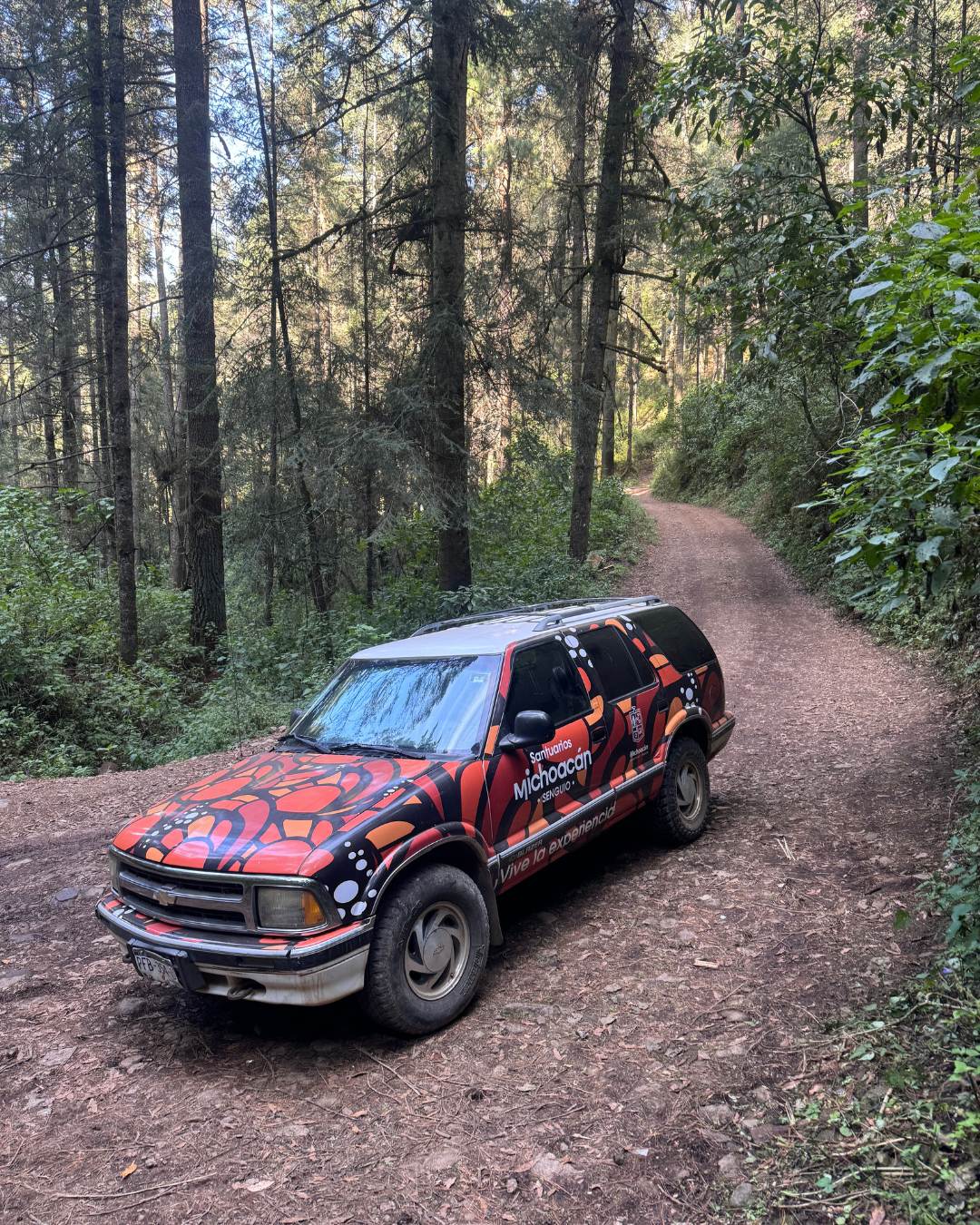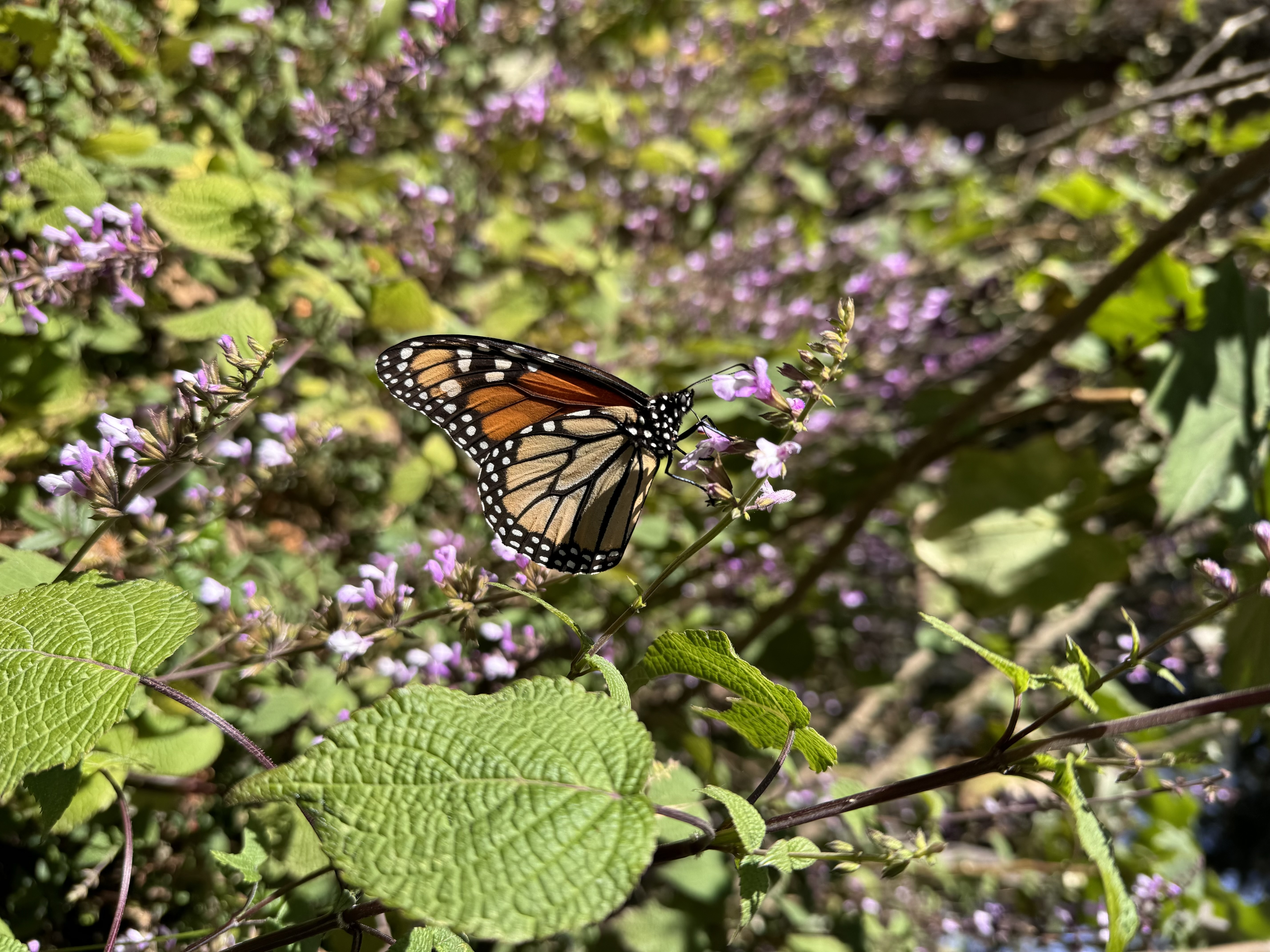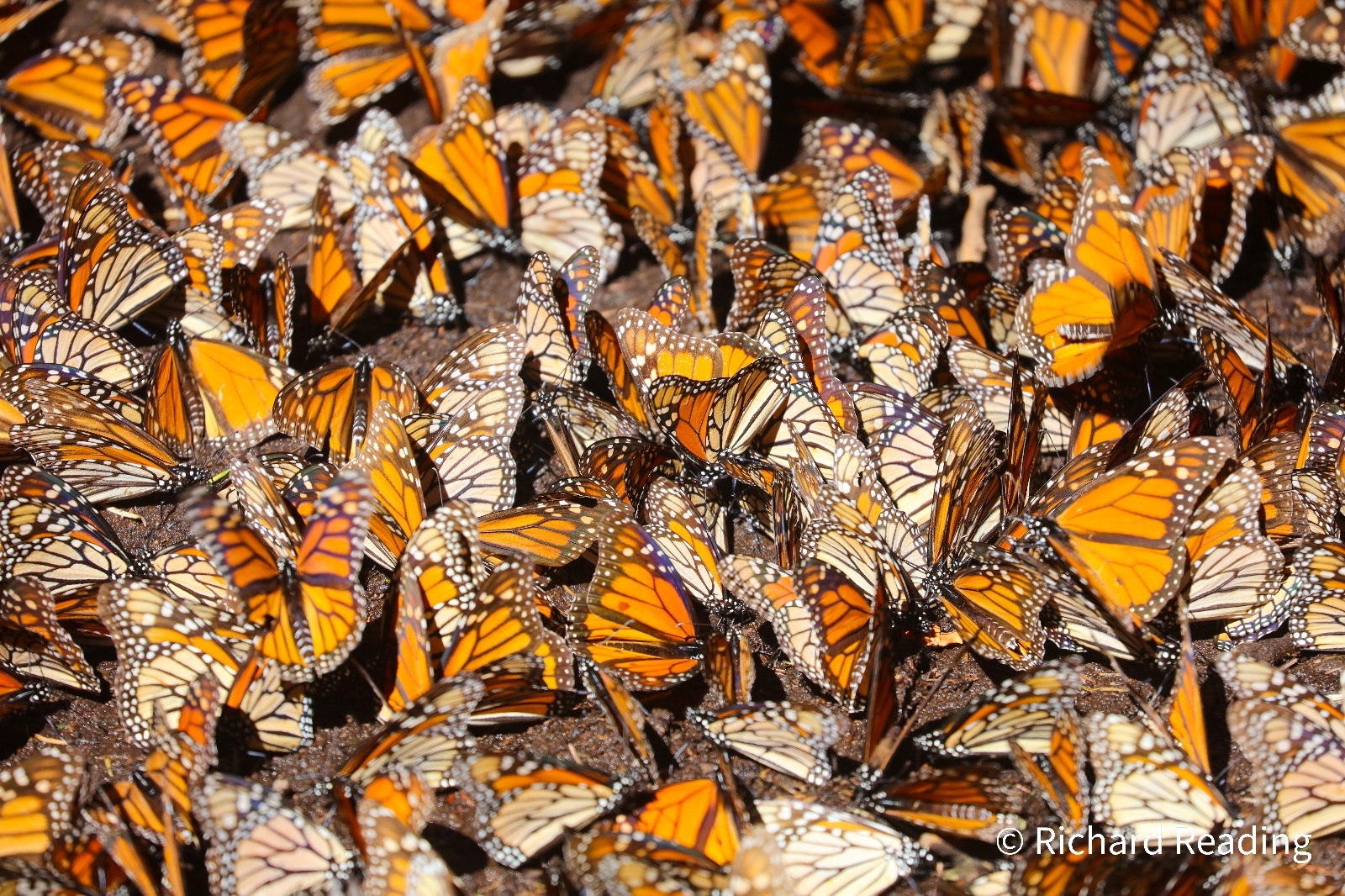Walking with the Monarchs: A Journey Through Time, Mountains, and Memory by Francisco Garcia Bulle Bueno, Director of Research and Conservation at Butterfly Pavilion
Published June 4, 2025
The “Monarchmobile is the main transportation vehicle for driving around the monarch butterfly refuge of Sierra Chincua. Photo by Francisco Garcia Bulle Bueno

Born and raised in Mexico City, monarch butterflies have always been more than just beautiful butterflies to me, they play an essential role in my culture, my memories, and my heritage. Last year (2024) I decided to embark on my fourth visit to one of the multiple wonderful sanctuaries of the Monarch butterflies. I flew into Mexico City, rented a car, and drove west to the highlands of Michoacán, heading straight for one of many sites for their migration: the Sierra Chincua Sanctuary.
To support the local community that has long protected this lush and protected habitat, we joined a group led by local guides. We jumped into their jeep, the “Monarchmobile” as the locals call it, and began the exciting and breathtaking ascent into the forest. As we climbed, the landscape shifted abruptly, from a forest mainly composed by pine trees to oyamel trees (Abies religiosa), a species as vital to adult monarchs as milkweed is for the caterpillars. These high-elevation trees create a cool, humid microclimate that shields the butterflies from freezing temperatures and desiccation during their long winter stay. Recognized by their soft, flat needles and sweet resinous scent.
We kept on going until we reached the entrance of the trail. With the beautiful sun beams shining through the oyamels, we could see some shades fluttering in the distance, they were the first monarchs. By the time I reach the heart of the Monarch Butterfly Biosphere Reserve, the trees are covered in them. They cling to every branch like golden-orange leaves, and when they take off, the sky becomes a living, pulsing cloud of wings. Best part of all, their small voices. They don’t speak like humans do, their voice is actually the sounds of their wings fluttering through the air. Like sweet smooth whispers. The sound of one is almost undetectable but the sound of millions of them is like hearing the voice of the earth.
To stand among them is to stand in the presence of something sacred, both biologically and culturally. Monarch butterflies (Danaus plexippus) have long bewildered us with their extensive and impressive journey: every year, they embark on a flight that comprises thousands of miles between Canada, United States, and Mexico. What makes this migration even more extraordinary is that it takes multiple generations. It takes about three to four generations of monarchs to travel North from Mexico to Canada in spring and summer—each generation laying eggs and passing the journey forward like a relay race. But in the fall, a single, extraordinary generation, often called the super generation, completes the entire return trip to Mexico, more than 4,000 km! without ever having made the journey before.
Walking around the mountain. This was the first monarch that I encountered. The first monarch to see of the season always occupies a special place in the heart. Photo by Francisco Garcia Bulle Bueno

This is an extraordinary event on earth both biologically and genetically. The fact that three to four generations after a whole cohort of butterflies is born with stronger and thicker bodies to withstand the thousands of kilometers they will fly until Mexico in comparison to these past generations is so impressive. And of course, only a bug could pull this off!
These butterflies are small, but they are among nature’s most resilient voyagers. They can fly through storms, predators, habitat loss, and all kinds of human-made obstacles. Their arrival in Mexico every fall coincides with Día de los Muertos (or Day of the Dead), when families honor the souls of departed loved ones, a millenary tradition from the indigenous people of Mexico. In many Mexican communities, especially among the Purépecha people in Michoacán, monarchs are believed to be the returning spirits of ancestors. They arrive like old friends, welcomed with marigold flowers, food, drinks, gifts, and candles. These beautiful butterflies are the fluttering messengers between worlds.
In terms of their conservation, their populations are struggling. Over the last decade, the eastern monarch population has declined significantly, with numbers fluctuating year to year due to climate change, habitat destruction, pesticide use, and deforestation in their overwintering sites. In 2013–2014, their numbers reached a record low, covering just 0.67 hectares of forest. While there have been slight rebounds, the trend remains deeply concerning.
The monarch sanctuaries in Mexico (like El Rosario, Sierra Chincua, and Cerro Pelón) offer a safe space and a refuge for them. These high-altitude havens provide the cool, moist conditions monarchs need to survive the winter. Local communities help protect these forests, and many work as guides, conservationists, or protectors of them and their forest, ensuring both ecological preservation and economic sustainability.
Seeing these monarch gatherings is one of the most beautiful spectacles on earth, a powerful reminder of the intricate link between species, ecosystems, cultures, and spirituality. The butterflies connect us all: people in the United States planting milkweed just like me living in Colorado and working in Butterfly Pavilion (situated in part of their migration path), Canadians at the furthermost part of the monarch’s range, and Mexicans in Mexican villages lighting candles for those who’ve passed and protecting their congregation sites during winter.
Thousands of monarchs clustered together create a beautiful living carpet of orange, black, and white, an spectacled to discover and see at least one in a lifetime.

As climate change accelerates and natural habitats shrink, the monarch’s future hangs in the balance. This is a call for action, for everyone out there. It is never too late, the time to act is now. By supporting initiatives that plant milkweed, reduce pesticide use, and protect overwintering grounds, we can be part of this great journey.
So, the next time you see a monarch flying by, please remember that this little bug is the symbol of strength, resilience and endurance as well as a connection that goes far beyond several generations and borders, the symbol of freedom. Let’s ensure that story continues.
Learn more about how to support restoration efforts in the monarch’s overwintering zones in Mexico below.
Monarch Butterfly Biosphere Reserve